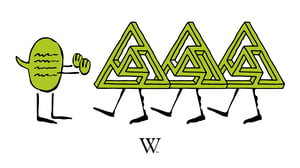Recording
How to claim the power of simple

#1. Simple is persuasive
‘That’s great… but what will I get?’ Put on your customer hat when reading your draft email or ad and ask yourself if you’d bother. Doing the hard work for readers is one of the reasons the Amazons of this world are worth a trillion dollars.
Trying to win new customers with needlessly wordy, technical language is like going into battle with a blindfold on. Apple sold us the iPod with ‘1,000 songs in your pocket’. We didn’t need the rest. Meet your customers (at least) halfway.
Do
- Ask ‘So what?’ – and keep asking it to find what your reader really wants to hear.
- Look for places to show the tangibles; what they’ll get in return.
Don’t
- Bombard with jarring, technical detail.
- Turn readers off with bloated documents or web pages.
#2. Simple is thrifty
Ah, the money argument. The C-suiters just sat up a little straighter in their chairs. They’ll be delighted to hear that simple writing saves cash. How? Well, if you send a clear message to begin with, you won’t have to untangle crossed wires. That means less postage and fewer calls to your support teams.
So take another look at your message. Are you giving readers too many chances to give up in frustration and confusion? We process language like we process numbers – is your choice of words channelling 2x2, or 17x4?
Do
- Replace formal language with normal language. Tell, don’t inform.
- Appeal to what readers instinctively know and won’t need to translate.
Don’t
- Give readers’ brains chance to tap out, with too much heavy lifting.
- Assume lesser-used words = smarter words (spoiler: they’re not).
#3. Simple is sticky
We all recognise the silhouette of a coke bottle – even when stripped of colour, words, texture. Okay, not everything you write will become quite as iconic; but keep that bottle in mind as you write.
Writing for work needs to be the skim-reader’s best friend. Upsetting yes, but your reader won’t pour over your every word – more likely they’ll take in what they can in a hurry. So, give them something to latch onto. Give them a coke bottle moment.
Do
- Use summary subheadings so skim-readers still get the gist.
- Run your writing through the ‘20 second’ test – did your key points sink in?
Don’t
- Overcomplicate statements. They won’t be memorable.
- Assume readers have time to savour your every word.
If your words need work, get in touch.